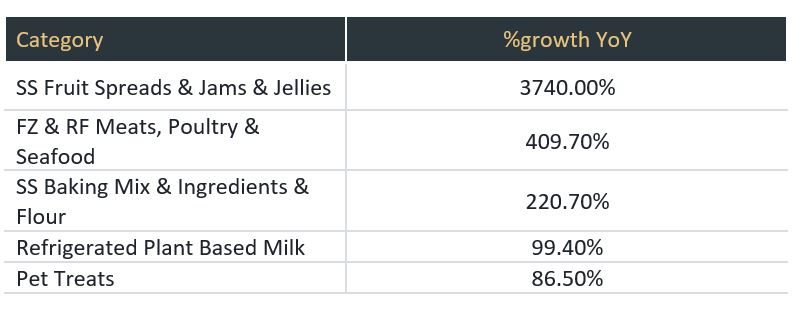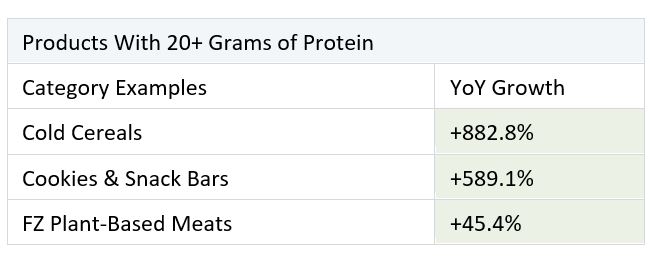What shoppers will be prioritizing in food, beverage, beauty, and pet care
The new year is poised to bring a mix of trends that will meet shopper preferences and shape the health and wellness industry. Many of the trends that will make the biggest splash in 2023 aren’t brand new, but rather reaching new heights that will make the industry take notice. Some trends will prove they are not passing fads but rather lifestyles that are here to say. Classic consumer habits will find a new audience and some new behaviors will inspire product innovation. It’s going to be an exciting year that builds on the energy we’ve seen from retailers and brands in the industry.
1. Sustainability Permeates the Product Lifecycle
For several years now, sustainability has been a hot topic and that’s not going away. Shoppers are concerned about a host of sustainability issues—be it packaging or animal welfare or GMO—and looking for products that meet those priorities. Looking at the third-party certifications that denote sustainable practices, Certified Upcycled proved itself to be a rising star in 2022. Although it has a smaller share of the market than Certified Non-GMO and Certified Organic products, it saw the most aggressive growth, up 21% year over year. Upcycling, or reusing discarded items to create a new product, is leading to significant category growth:

Source: SPINS Natural Channel, SPINS Conventional Channel (powered by IRI) data 52 Weeks Ending October 30, 2022. Alcohol, Body Care, Frozen, Grocery, Medicine & Personal Health, Pet, Produce, Refrigerated & VMS Departments.
2. Shoppers Focus on Nutrition
As much as shoppers are willing to try new foods and explore flavors, they also want their tried-and-true favorites and pantry staples. Brands are emphasizing nutrient-dense products that are also convenient (and tasty). For example, Goodles’ boxed macaroni boasts 14g of protein per serving, while Bobo’s toaster pastries promote its 18 grams of whole grains on top of its plant-based and dairy-free ingredients. These products are giving shoppers the opportunity to stay focused on their nutrition goals without having to abandon their favorite dishes.

Source: SPINS Natural Channel, SPINS Conventional Channel (powered by IRI) data 52 Weeks Ending October 2, 2022. Related: 2023 Health & Wellness Trend Predictions
3. Classic Diets Keep Growing
Keto and paleo diets are not new, but they are enjoying renewed popularity as younger shoppers avoid grains and high-carb products. Brands and restaurants are responding by offering new options that make these diets easier to incorporate into daily routines. Refrigerated entrées like Kevin’s dinners are Certified Paleo and incorporate global flavors, which appeals to dieters who are tired of rote meal prep recipes comprised of skinless chicken breasts.
For paleo shoppers, certifications and label claims often lead to higher sales:
- Products that are certified Paleo or Paleo Grain Free enjoyed 16.6% and 16.3% growth, respectively.
- Paleo-positioned products experienced 18.6% growth, while products with the grain-free label claim rose 15.9%.
For keto shoppers, low-carb products are must-haves, and sales reflect their enduring popularity over the last year:
- Cold cereals grew 46.6%
- Yogurt rose 32.7%
- Bread and baked goods increased 21.1%
Source: SPINS Natural Channel, SPINS Conventional Channel (powered by IRI) data 52 Weeks Ending October 2, 2022.
4. Animal-Free Dairy Gains Attention
Animal-free dairy is a recent innovation that early adopters have taken notice of, but more shoppers will get on board in the coming year. Not to be confused with plant-based or dairy-free labels, animal-free dairy products are derived via precision fermentation, which replicates animal-free dairy proteins. The result is a product that does not come from an animal and is considered to be a sustainable alternative to other dairy options. It’s still a fairly recent innovation that will take more education for both shoppers, retailers, and brands (SPINS will soon include “Non-Animal Dairy Protein” in its attributes library to allow for trend tracking). Still, it is ideal for a growing trend as it reaches shoppers who are concerned about sustainability, who might have dietary restrictions, and who have yet to find a plant-based alternative that suits their tastes.
5. Beauty Products Meet Higher Shopper Standards
Sustainability continues to cross over from the food and beverage aisles into personal care products—especially the beauty aisle. Shoppers are concerned about the ingredients in their makeup and lotions and about their manufacturing process. Part of that concern is reflected in beauty trends on social media. YouTube, TikTok, and Instagram have influential beauty communities whose trends can change how viewers shop and use products.
In 2023, expect trends like skinimalism (which emphasizes a simple skin routine with only a few ingredients) and clean products to remain popular. These trends will send more shoppers looking for sustainable, vegan, and natural products. For example, social media influencers are already touting bakuchiol (up 23%) and algae and sea fennel (up 16%) as better-for-you alternatives to classic makeup products.
Source: SPINS Natural Channel, SPINS Conventional Channel (powered by IRI), Body Care for the 52 Weeks for the week ending October 30, 2022
6. Meat and Poultry Will Have Highs and Lows
Prices and supply chain issues made 2022 a hectic year for meat and poultry consumers. The outlook is better in some regards for 2023, but shoppers might have a few reasons to adjust their shopping behavior. Cattle ranchers are dealing with smaller herds, which means less beef and higher prices going into the next year. Conversely, increased production and softer demand for poultry will likely keep some chicken processes lower, a much-needed respite for budget-conscious shoppers. Perhaps the most interesting trend to watch will be how shoppers prioritize the attributes that mean the most to them. Even during inflationary periods, shoppers are likely to stay faithful to meat and poultry that are grass-fed, organic, etc. The coming months (and years) will be a test to see how many shoppers are willing and able to buy in accordance with their preferences and values.
7. Pet Stores Expand Their Offerings
The innovation that we’ve seen over the years within clean-label and plant-based products is going to look familiar in pet stores in 2023. Shoppers aren’t just focusing on nutrition and quality for themselves; they are raising the standards for what they give their pets. Many independent and regional pet retailers have carried fresh and clean-label food products, but more stores will follow suit. Don’t be surprised to see many pet retailers with refrigerators and freezers for frozen and fresh pet food as an alternative to big bags of kibble. Even store shelves might look different as plant-based snacks, like Better Brat or Better Burg’r, meet the needs of shoppers who are keeping their pets’ own specific diets.
For more insights into the 2023 trend predictions, watch our on-demand webinar featuring SPINS data experts. Learn how evolving shopper preferences and priorities are inspiring product innovation that’s landing on store shelves.





